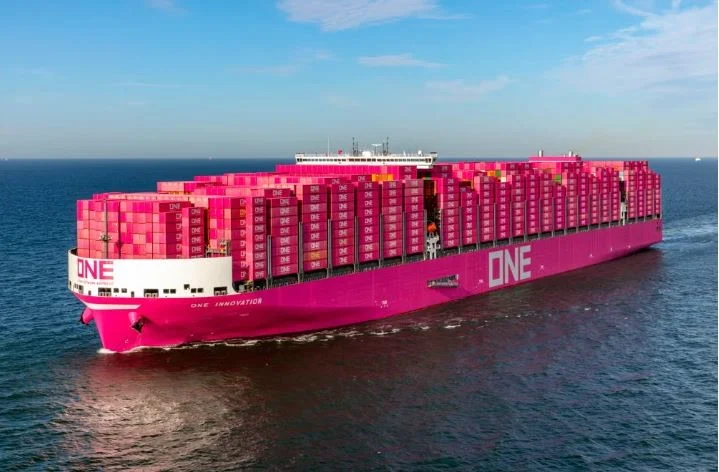When we consider global trade, sleek airplanes or whirring trucks may be what jumps to mind. But the actual silent champions of international commerce? Cargo ships. These steel monsters quietly drive the global economy, hauling nearly everything we touch — from smartphones and spices to vehicles and crude oil.
So, just what are cargo ships, and why do they matter so much?
What is a Cargo Ship?
Cargo ships — often simply called freighters — are purpose-built vessels that move all kinds of goods and raw materials across oceans, serving as the workhorses of international trade. Passenger ships are not like these ships, as these ships are all about efficiency, space, and stability.
Cargo ships are the backbone of maritime logistics, with them carrying approximately 90% of international trade. Without cargo ships, international business would stop entirely.
Various Types of Cargo Ships
Not all cargo vessels are the same. Ships are constructed according to the type of cargo they will carry and are equipped with certain characteristics and handling systems:
1. Container Ships
The most familiar of cargo ships. They transport goods in standardized containers (such as the 20ft or 40ft containers). The design facilitates quicker loading and unloading as well as less damage in transit.
2. Bulk Carriers
These ships are designed to haul large quantities of loose cargo — think grain, iron ore, cement, or coal — all loaded directly into massive storage holds without any packaging. The goods are typically poured straight into huge holds.
3. Tankers
Built to carry liquid cargo like oil, chemicals, or liquefied natural gas. There are various tankers for various liquid cargo—some have even sophisticated heating or refrigeration plants.
4. Ro-Ro Ships (Roll-on/Roll-off)
These vessels are built to handle wheeled cargo — like automobiles, trailers, and buses. Instead of relying on cranes, vehicles are driven directly onto the ship using built-in ramps, making loading and unloading much quicker and more efficient.
5. General Cargo Ships
These transport break-bulk cargo, which is freight that isn’t in bulk or containers. Goods are typically loaded individually — such as machinery, pallets, or bagged items.
6. Reefer Ships
These are chilled ships, utilized for carrying perishable items such as fruits, meat, dairy, and drugs that need to be stored at a regulated temperature.
How Do Cargo Ships Work?
Cargo ships depend on enormous diesel engines to move and can travel non-stop for weeks. A majority of contemporary ships come with cutting-edge navigation and communication equipment, GPS, radar, and automatic engine control.
The design is such that maximum capacity can be achieved while equilibrium will be kept at sea. Most ships carry ballast tanks, which are loaded with water in order to assist in equilibrium when not in full load.
Behind the Scenes of Crew Life
Cargo vessels might be machines, but they require human beings to run them. A standard crew could consist of:
Captain (Master) – Responsible for the ship and general operations.
Chief Engineer – Oversees the engine and all equipment.
Deck Officers – Responsible for navigation and cargo operations.
Ratings – Assistant staff that help with maintenance, cooking, and cleaning.
Life on board is gruelling — long hours, isolation, and unpredictable weather— but for most, it’s a career based on discipline and adventure.
Challenges Confronting Cargo Ships
Cargo ships, even though they are very important, suffer from a number of operational and environmental challenges:
- Piracy: Some areas, such as the Gulf of Guinea or the Strait of Malacca, are pirate hotspots.
- Pollution: Shipping contributes to greenhouse gas emissions. Newer regulations now push for low-sulphur fuels and greener technologies.
- Port Congestion: Delays in loading/unloading can disrupt entire supply chains.
- Weather: From hurricanes to rogue waves, cargo ships must brave unpredictable sea conditions.
Future of Cargo shipping
The industry is shifting fast. We’re now seeing the rise of:
Autonomous ships: Trials are underway for crewless vessels operated remotely.
Cleaner energy: LNG-fuelled vessels and even wind propulsion systems are in the works.
Digitalization: Real-time monitoring, routing supported by artificial intelligence, and predictive maintenance are becoming the norm.
Sustainability and efficiency will drive the next chapter in cargo shipping.
Final Thoughts
Cargo ships don’t just bob around on oceans—they link the world together. Each time you open a package, drive an automobile, or enjoy food that’s been imported, there’s a high likelihood a cargo ship was involved in bringing it to you.
They don’t capture the headlines, but they keep the world engine moving


